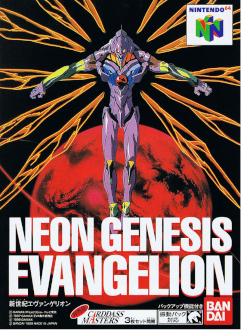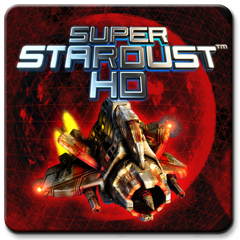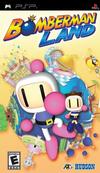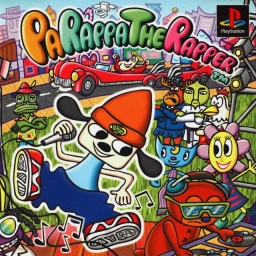
I.Q.: Intelligent Qube, also known as Intelligent Qube in North America and Kurushi in Europe, is a puzzle video game for the PlayStation. In the game, the player controls a character who must run around a platform made of cubes, clearing certain cubes as they approach. Cubes are "cleared" by marking a spot on the stage, waiting for the cube to roll on top of it, and then deactivating the marked spot.

The Net Yaroze is a development kit for the PlayStation video game console. It was a promotion by Sony Computer Entertainment to computer programming hobbyists which launched in June 1996 in Japan and in 1997 in other countries. It was originally called "Net Yarouze", but was changed to "Net Yaroze" in late 1996. Yarōze means "Let's do it together".

Formula One 99 is a racing video game developed by Studio 33 and published by Psygnosis for PlayStation and Microsoft Windows. It is the sequel to the 1998 video game Formula 1 98 and was based on the 1999 Formula One World Championship.

Fantavision, sometimes stylized as FantaVision, is a puzzle video game developed by Japan Studio and published by Sony Computer Entertainment for the PlayStation 2 (PS2). The game's objective is to use a cursor to select three or more launched fireworks of the same color in a row and then to detonate them to increase the player's score. Used in conjunction with various power-ups, the resulting explosions can ignite and chain together even more flares for additional points.

Neon Genesis Evangelion, also referred to as Neon Genesis Evangelion 64, is a 1999 fighting game released for the Nintendo 64 in Japan by Bandai. It is based on the Gainax anime series Neon Genesis Evangelion and the 1997 film that serves as its conclusion, The End of Evangelion. Players control a mech named Evangelion Unit 01 to destroy a race of aliens known as the Angels before they eradicate the rest of the human race. The game is known for its alterations to the source material in order to make its dystopian and unsettling atmosphere suitable for an action game, and features unique endings and plotlines not present in other Evangelion media.

Armored Core: Project Phantasma is a 1997 third-person shooter mecha video game developed by FromSoftware for the PlayStation. Project Phantasma is the second entry in the Armored Core series and a prequel to the original Armored Core. The game was not released in Europe.

Armored Core: Last Raven is a 2005 mecha-based vehicular combat game developed by FromSoftware. It is part of the Armored Core series and is a direct sequel to Armored Core: Nexus (2004). The game was originally released for the PlayStation 2 and was ported to the PlayStation Portable in 2010. Gameplay remains largely unchanged from the game's predecessors and is centered around piloting a large mech in combat missions for various clients. The game is also notable for being the debut project of future FromSoftware president Hidetaka Miyazaki.

Virtua Tennis: World Tour, known in Japan as Power Smash: New Generation, is a tennis video game which was released for the Sony PlayStation Portable.

Bubble Bobble Evolution is a game in the Bubble Bobble series for the PSP system. It is known as Bubble Bobble: Magical Tower Daisakusen!! in Japan.

Rapid Racer, known as Turbo Prop Racing in North America, is a racing video game developed by SCE Studios Soho and published by Sony Computer Entertainment exclusively for the PlayStation. In the game, the player takes control of a motorboat and races around six different tracks. Eventually, all six tracks can be raced mirrored, as well as set at night time.

Super Stardust HD is a downloadable shoot 'em up video game that was released for the PlayStation 3 by Sony Interactive Entertainment, developed by the Finnish company Housemarque. In Asian regions, it is known as Star Strike HD. In 2015, a port for the PlayStation 4, called Super Stardust Ultra, was released. In 2016, Super Stardust Ultra VR, a PlayStation VR compatible version that contains Super Stardust Ultra, was released for the PlayStation 4. It is also available as paid downloadable content for Super Stardust Ultra.

Bomberman Land, known in Japan as Bomberman Land Portable, is a video game released for PlayStation Portable on 21 March 2007 in Japan, and in North America and the PAL region in 2008. Part of the Bomberman franchise, it is the sixth game in the Bomberman Land series and the portable counterpart to the console version released for the Nintendo Wii in the same month.

Resistance: Retribution is a third-person shooter video game developed by Bend Studio for PlayStation Portable. It was announced on July 15, 2008, at Sony's E3 press conference and released on March 17, 2009, in North America, March 20, 2009, in Europe and March 26, 2009, in Australia. Bend Studio said in an interview with GameSpot that they worked with Insomniac Games in the initial process of the game design. It is set between Resistance: Fall of Man and Resistance 2. Sony has discontinued online support for the game.

Kula World is a 3D platform puzzle video game developed by Game Design Sweden AB for the Sony PlayStation, which places the player in control of a Kula beach ball. The main objective of the game is to collect keys which unlock the level exits, as well as coins and jewels along the way. The game makes use of alternative physics, changing the direction of gravity as the ball moves.

PaRappa the Rapper (パラッパラッパー) is a Japanese rhythm video game developed by NanaOn-Sha and published by Sony Computer Entertainment for the PlayStation in Japan in 1996 and worldwide in 1997. Created by music producer Masaya Matsuura in collaboration with artist Rodney Greenblat, the game features unique visual design and rap-based gameplay and is considered the first true rhythm game. It was ported to the PlayStation Portable in 2006 in celebration of its 10-year anniversary. A remastered version of the original PlayStation game was released for PlayStation 4 in 2017 for the game's twentieth anniversary.

ModNation Racers is a 2010 go-kart racing video game developed by United Front Games and San Diego Studio for the PlayStation 3 and PlayStation Portable. User generated content is a central aspect of the game, such that it uses the same "Play, Create, Share" adage as LittleBigPlanet to convey its basis in online user-generated content sharing and level creation tools.

Everybody's Golf, known in North America as Hot Shots Golf and in Japan as Minna no Golf, is the first game in the Everybody's Golf series. It was the only game in the series to be developed by Camelot Software Planning, which later developed the Mario Golf series.

Bombastic, known in Japan as XI Go (XIゴ), is a puzzle video game developed by Shift exclusively on PlayStation 2. It is the sequel to Devil Dice.

Super Puzzle Bobble 2, released as Super Bust-A-Move 2 in North America and Europe, is a puzzle video game in the Puzzle Bobble series developed by Taito, and was released in 2002 for the PlayStation 2.



















